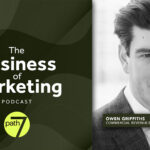By Seraj Bharwani, Chief Strategy Officer at illumin
What is Journey Advertising?
The Consumer Journey is a metaphor for a consumer’s decision-making process enroute to satisfying a need. The need could be a consumer desire to own a product, experience a service or even contribute to and be part of a cause. The journey can extend beyond the first purchase to repeat buying and continued brand loyalty/advocacy. Journey Advertising is a brand’s ability to reach consumers at key moments along the journey with relevant content and creative messaging to achieve mutually beneficial outcomes.
Why bother with Journey Advertising?
Consumers don’t purchase big-ticket items of consequence to themselves or their family without due consideration. Purchases relating to home improvement, household goods, automotive, financial services, healthcare, wellness and fitness, online education, travel and tourism and similar products or services require careful consideration over weeks or even months before consumers commit to buy from a specific brand. Furthermore, consumer needs continue to evolve over time and brands that believe in the concept of the customer lifetime value (total worth of a customer over the entire period of the relationship with a brand) must continue to nurture the relationship to ensure repeat purchases, build brand advocacy and increase market share.
How many journeys do I need?
Just as there are many routes to a destination, sometimes several journeys are needed to accommodate consumer segments, depending on where they are in their decision-making-process.
1) Out-of-Market Segment – consumers who don’t recognize the need or your brand
A vast majority of the consumers are not in the market to buy. It could be because they haven’t yet identified a need, aren’t aware of your brand, don’t know if your brand is the right solution for them, don’t have the financial resources or potentially other reasons. The journey for these consumers may be longer and it could take weeks or months to guide them through the decision-making process.
2) In-Market Segment – consumers who are actively seeking a solution
Under 5% of the total addressable audience for any category is in-market to buy each month. While this sounds like an easy audience segment, every other marketer is also targeting the in-market segment, since the journey for consumers with an immediate need could be as short as a few days. The sheer number of competitive messages can overload media channels, diverting consumer attention, driving up the cost of media and corresponding cost per acquisition.
3) Customers – consumers who have already made a purchase
Anyone who has already purchased from your brand and had a positive experience would likely be a strong candidate for both repeat purchase and advocacy. Additionally, customers are easier to reach via phone, email, physical address and SMS since they have explicitly shared their data with you as part of the initial transaction. Even in categories like automobiles where consumers make infrequent purchases, their advocacy and testimonials can be a compelling source of brand outreach through social and other media channels.
Does Journey Advertising work?
Yes. If you are selling something that requires careful consumer consideration before making a commitment (to purchase, enroll, register, vote, etc.), Journey Advertising is simply smart advertising. It helps you learn quickly about which moments in a consumer’s decision journey drive the most impact and coordinates creative messages across key moments along a connected path to collectively produce more efficient and/or more effective outcomes.
Our experience across 15 different vertical industries indicates that the average order value of purchases is 2.5x higher when consumers are exposed to connected journey advertising. The order in which the creative messages are delivered along the connected journey also has an impact on return on advertising spend (ROAS). We have seen up to 3.5x higher ROAS from programs that optimize the connected journey (choice of channels, advertising formats and message sequence) relative to programs that don’t (i.e. the “control” group).
Any best practices for Journey Advertising?
The best advertising addresses consumer needs and answers questions before the consumer even knows they have them. Use the following journey advertising tips to connect with the consumers in-the-moment and inspire them to keep an open dialog and long-term relationship with your brand:
Marketer’s tip #1: Messages must be differentiated
Journeys are unique to the audience. In-Market buyers need immediate assistance with a clear call-to-action via text or display messages to help them break out of the search and evaluation loop that hampers the purchase decision. By contrast, Out-of-Market buyers need awareness, education and inspiration that is better delivered through story-telling video and audio messages to help recognize the options best suited to satisfying their needs.
Marketer’s tip #2: Moments matter
Consumer behavior signals are essential to identifying when you can be of most assistance to prospective buyers with appropriate messaging. Your goal is to guide the user with their consent to provide a clear and honest value exchange in bright, well-lit media environments. Focus on the context (what consumers read, listen, watch and share) and assess top-of-mind needs and passions using data that consumers are comfortable sharing with you, while avoiding 3rd-party cookies and related tracking schemes without explicit permission.
Marketer’s tip #3: Measurement is key
Consumer feedback can be obtained in the form of attention to the brand creative, response to polling questions along the journey, visits to the brand’s website, time spent on site, purchase transactions, order value of the purchases and others. Almost all stages of the journey should be measurable and easy to visualize immediately on a common journey canvas to allow for further improvement in messaging, creative treatment, message sequence, channel-mix, call-to-action and others.
How to get started with Journey Advertising
Every journey starts with an audience and not all audiences need a custom journey. Putting yourself in your customers’ shoes is critical to understanding their needs and how you can be of assistance without becoming an annoyance. You must be able to visualize key consumer decision points where your message meets the audience to help arrive at mutually desired milestones and measurable business outcomes.
For more information:
![]()
We are an advertising technology company that empowers marketers to make smarter decisions about targeting and communicating with online consumers. Our omnichannel journey advertising platform, illumin™, offers media planning, buying and real-time intelligence from a single platform —helping organizations form meaningful connections, minimize marketing costs and grow their business.
About the Author
 Seraj Bharwani, CSO, AcuityAds
Seraj Bharwani, CSO, AcuityAds
Seraj is the Chief Strategy Officer at AcuityAds, responsible for advancing the state of omnichannel journey marketing. He is an authority on consumer trends and insights and is the author of numerous articles on emerging audience behaviors critical to driving business results. He delivers keynote speeches, leads webinars and moderates CMO panels at major conferences throughout the year. Seraj previously led Strategy & Analytics at Digitas as part of the founding team and led the development and adoption of third-party reach and attention metrics for online video in partnership with Google, Facebook and Twitter as the CSO at Visible Measures. Seraj is a graduate of MIT Media Lab.








